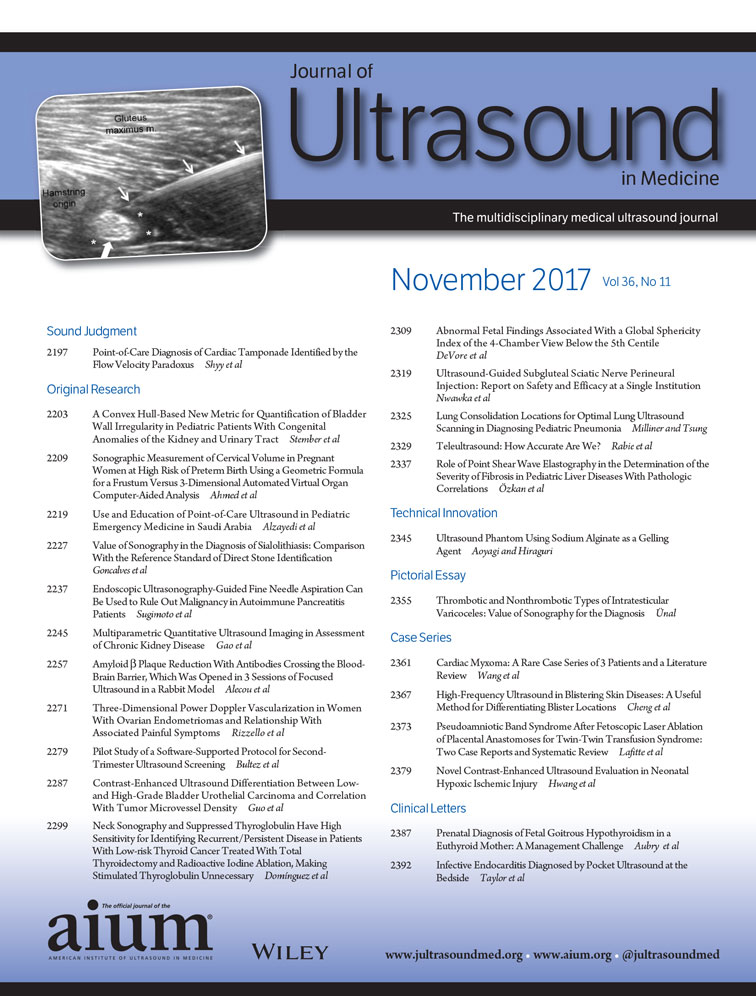Neck Sonography and Suppressed Thyroglobulin Have High Sensitivity for Identifying Recurrent/Persistent Disease in Patients With Low-risk Thyroid Cancer Treated With Total Thyroidectomy and Radioactive Iodine Ablation, Making Stimulated Thyroglobulin Unnecessary
We thank Lorena Mosso, MD, for her generosity in sharing her registry of patients.
Abstract
Objectives
Follow-up of patients with low-risk differentiated thyroid cancer treated with total thyroidectomy and radioiodine requires neck sonography and thyroglobulin (Tg). The need to stimulate Tg is controversial. The goal of this study was to compare the diagnostic performances of sonography plus suppressed or stimulated Tg in low-risk thyroid cancer.
Methods
After total thyroidectomy and radioiodine, patients with low-risk thyroid cancer were retrospectively identified as having structural or biochemical persistence/recurrence. We compared the diagnostic performance of suppressed and stimulated Tg to detect persistence/recurrence.
Results
We included 148 patients with low-risk thyroid cancer who were followed for a median of 3.7 years. Persistence/recurrence was found in 8 patients (5.4%; 5 structural disease and 3 biochemical disease). Thyroglobulin was not stimulated in 72 patients (group 1) and stimulated in 76 (group 2). In group 1, 5 patients (6.9%) had structural neck persistence/recurrence (3 with suppressed Tg ≥ 1 ng/mL and 2 with suppressed Tg < 1 ng/mL). Four patients underwent surgery, and 1 was surveilled. All 5 patients had suppressed Tg lower than 1 ng/mL at the end of follow-up. In group 2, stimulated Tg did not identify additional cases of structural persistence/recurrence but classified 3 patients (3.9%) as having biochemical persistence/recurrence. One patient received a second dose of radioiodine, and the other 2 were surveilled; all were without disease at the end of follow-up. Suppressed and stimulated Tg had negative predictive values for persistence/recurrence of 97% and 100%, respectively.
Conclusions
In low-risk thyroid cancer treated with total thyroidectomy and radioiodine, sonography and suppressed or stimulated Tg have similar negative predictive values for persistence/recurrence. Importantly, the coexistence of negative sonographic findings and suppressed Tg lower than 1 ng/mL makes the addition of stimulated Tg unlikely to identify clinically important disease.




